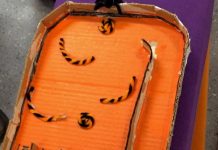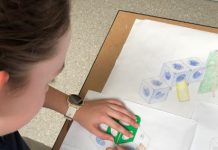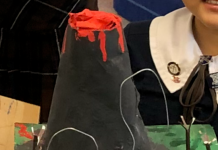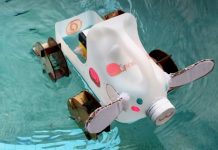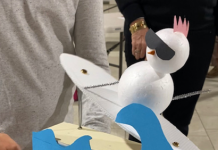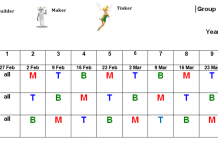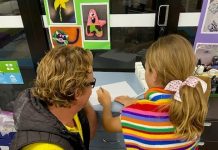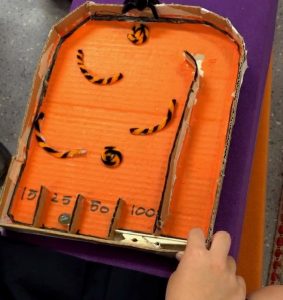 Throughout this hands-on project, students were prompted to express their creativity by conceptualizing the layout, theme, and overall design of their pinball game. This encouraged innovative thinking and the creation of a visually captivating and distinctive gaming experience.
Throughout this hands-on project, students were prompted to express their creativity by conceptualizing the layout, theme, and overall design of their pinball game. This encouraged innovative thinking and the creation of a visually captivating and distinctive gaming experience.
Building a functional pinball game introduced challenges such as designing an effective peg flipper and creating obstacles. In navigating these challenges, students engaged in problem-solving, honing their ability to troubleshoot and devise practical solutions. The project seamlessly integrated fundamental physics principles, including gravity, momentum, and angles. Through experimentation with slopes, obstacles, and marble movement, students gained an understanding of these concepts in a real-world context.
Mathematics became an integral part of the project, requiring students to employ math skills for calculating angles, distances, and scores. The consideration of probability adds another layer as students assessed the likelihood of the ball hitting specific targets. The hands-on nature of constructing the pinball game contributed to the development of fine motor skills, emphasizing precision and coordination in activities such as cutting, folding, and assembling cardboard pieces.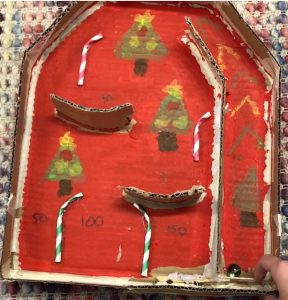
Success in the pinball game’s functionality and aesthetics hinged on attention to detail. Students learnt to meticulously consider the placement of the peg and overall visual appeal.
Students embraced the trial-and-error process, revising designs and adjusting mechanisms until they attained the desired outcome. Upon completion, students presented their pinball games to other students to play, enhancing their presentation skills and allowing them to articulate their design choices while receiving constructive feedback from their peers.
This project encouraged critical thinking about design decisions. Questions about the strategic placement of bumpers and the influence of slope on marble movement prompt participants to think critically about cause and effect in the design of the game. Designing and creating a peg pinball cardboard game offered students a holistic learning experience allowing them to develop creativity, building, making and problem-solving skills.

